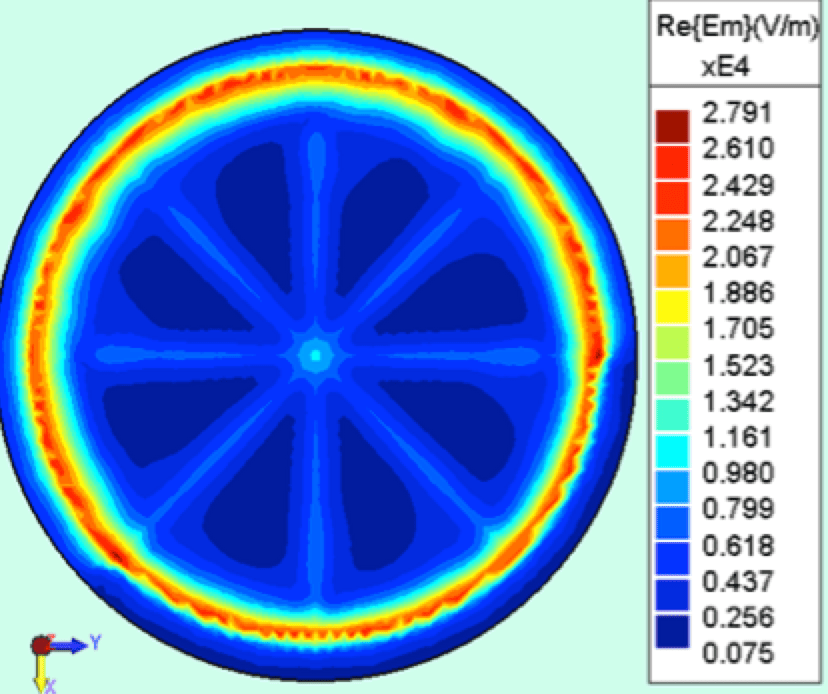Computer simulation of grounding applications is important both in power generation and distribution. This edited contribution to INMR by Shirish S. Karveer of Integrated Engineering Software in Canada offers an example where the proprietary Boundary Element Method (BEM) solver allows efficient simulation of grounding scenarios, especially in HVDC, involving open regions for electromagnetic field computation.
The model here consists of 648 volumes that have been assigned specific conductivities, thus demonstrating the software’s capability when it comes to assigning and managing materials with a range of conductivity values. COULOMB is an industry standard program to solve conductivity mode problems for electric field analysis.
The HV electrode, shown in blue, is placed in the central part of the first layer and assigned a voltage of 400 kV. The layers have been modeled as per the numbers inscribed vertically on the left and with specific conductivity values assigned to them based on geological surveys of earth samples. The radius of the complete cylinder is two kilometers with approximate equivalent height. This model requires less than 15 minutes to solve on a 64-bit Windows dual core computer – provided a RAM of 24 GB or more is available. The various analysis results presented below for the above model are only basic sample computations. More specific and detailed computations for a variety of parameters are also possible.

CLICK TO ENLARGE

CLICK TO ENLARGE

CLICK TO ENLARGE

CLICK TO ENLARGE

CLICK TO ENLARGE

CLICK TO ENLARGE
Voltage and electric fields can be further computed and analyzed in azimuthal (phi) directions, as for radial ones. Each sector (shown above in Fig. 6) is 22.5°, with 16 sectors in total. COULOMB can also be controlled externally using an Application Programming Interface (API). An API script to create similar 3D geometry and material assignments is available in Excel-VBA and Python 3. Model creation can be achieved quickly and efficiently using these types of applications (API scripts).
[inline_ad_block]










